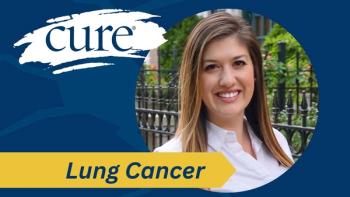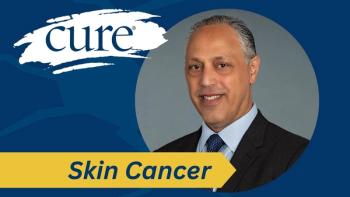Patients with stage 4 non-small cell lung cancer (NSCLC) treated with either a standard or reduced dose of Keytruda (pembrolizumab) had a similar one-year survival rate, allowing the NVALT-30 trial to continue enrolling patients, according to recent study findings.
“There’s a notion that trials on the optimization of dosing, duration and personalization of treatment are really underrepresented in the current research,” Michel M van den Heuvel, a professor at the Radboud Institute for Molecular Life Sciences in Nijmegen, Netherlands, said during the presentation at 2024 ESMO Congress.
Study Highlights:
- Patients with stage 4 non-small cell lung cancer (NSCLC) who received a reduced dose of Keytruda had similar survival rates to those who received the standard dose.
- The reduced-dose group showed comparable one-year overall survival, progression-free survival, disease control and objective response rates to the standard-dose group.
- The findings suggest that a lower dose of Keytruda may be a viable option for some patients, potentially reducing side effects and costs.
The one-year overall survival rate (patients who were alive after one year of treatment) was 57.7% in the standard-dose group and 55% in the reduced dose group. Median overall survival (time when a patient with cancer is still alive) was 17 months in the standard-dose group and 13.9 months in the reduced-dose group. There was no significant difference in overall survival between the groups.
Median progression-free survival (time a person lives without disease getting worse) was 6.9 months in the standard-dose group compared with 7.6 months in the reduced-dose groups.
In addition, the one-year disease control rate was 37% in the standard-dose group and 39.2% in the reduced-dose group. The objective response rate (the percentage of patients whose tumors shrunk or disappeared after treatment) was 50.9% in patients assigned the standard dose versus 54.5% in those assigned the reduced dose.
Trial Design
Researchers performed a to compare either the standard dose of Keytruda, which was administered to 23 patients (median age, 69 years; 59% men), or the reduced dose, which was given to 133 patients (median age, 68 years; 58% men). Patients in the standard-dose group received Keytruda either 400 milligrams every six weeks, 150 mg every three weeks or 200 mg every three weeks. For patients in the reduced-dose group, patients received 300 mg every six weeks or 100 mg every three weeks.
“The primary objective of this study is to investigate the non-inferiority of reduced-dose Keytruda versus standard of treatment of advanced stage non-small cell lung cancer in terms of overall survival,” van den Heuvel said.
The trial enrolled patients with NSCLC who were eligible for Keytruda-based treatment. An interim analysis was planned after the first 250 patients were enrolled and then followed for one year. A difference of 10% in one-year overall survival between the groups was considered clinically significant and may lead to early termination of the trial.
Secondary objectives of the study included disease control rate (the proportion of a population protected against a specific disease), progression-free survival, one-year disease control rate, overall response rate and to develop, assess and validate immune checkpoint inhibitor (ICI) response biomarkers (biological markers that help predict how well a patient will respond to ICI therapy).
The median cumulative dose of Keytruda was 1600 mg in the standard-dose group compared with 1200 mg in the reduced-dose group. Thirty-four percent of patients assigned the standard dose group were still on treatment after one year compared with 28% assigned the reduced dose. The most common reason for treatment termination was progressive disease, van den Heuvel noted.
Immunotherapy and NSCLC Treatment
As immunotherapy is the “backbone of treatment of non-small cell lung cancer,” as van den Heuvel noted, it has its disadvantages despite improving survival and quality of life. One of these disadvantages is the fact that the response rate is nearly 50%.
“The toxicity is also, although acceptable and manageable, sometimes worrisome, and bothersome especially the long-term toxicity,” said van den Heuvel. “In fact, limited data on the optimal dosing, as we know from all types of ex vivo (outside of the living body) models, we see that there is a clear dose relation.”
There are several current standard-of-care doses of Keytruda, including 200 mg every three weeks, 400 mg every six weeks, and 150 mg every three weeks, among others.
“But could we improve on this dosing and, thereby, for instance, reduce healthcare costs and maybe redundant exposure to [Keytruda],” van den Heuvel said.
For more news on cancer updates, research and education, don’t forget to subscribe to CURE®’s newsletters here.





